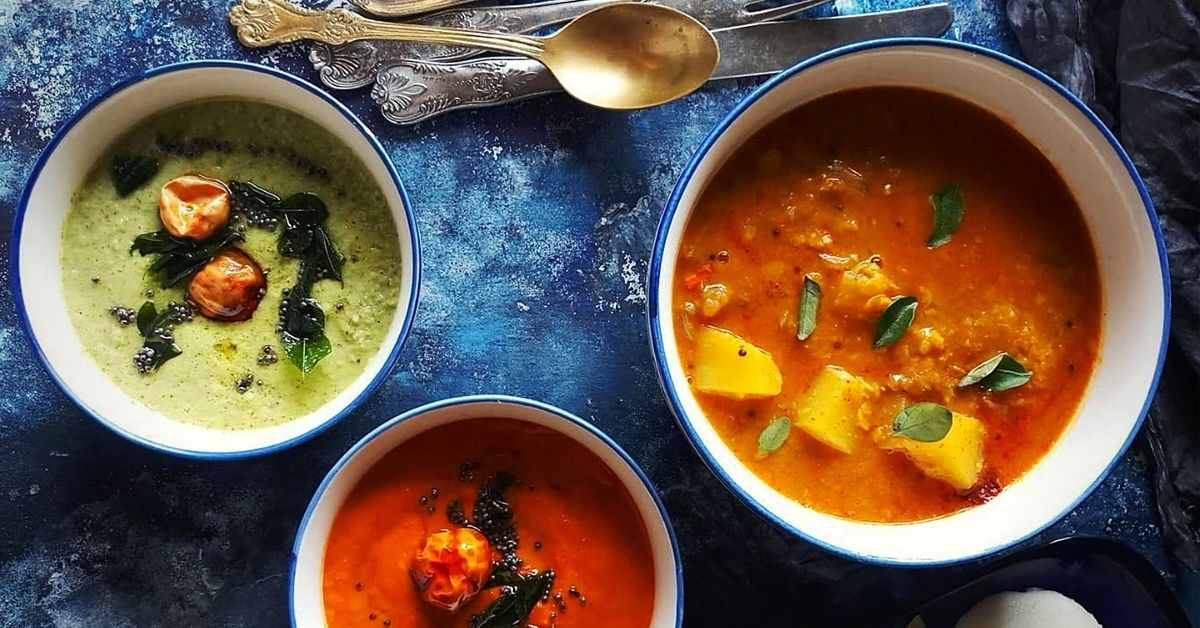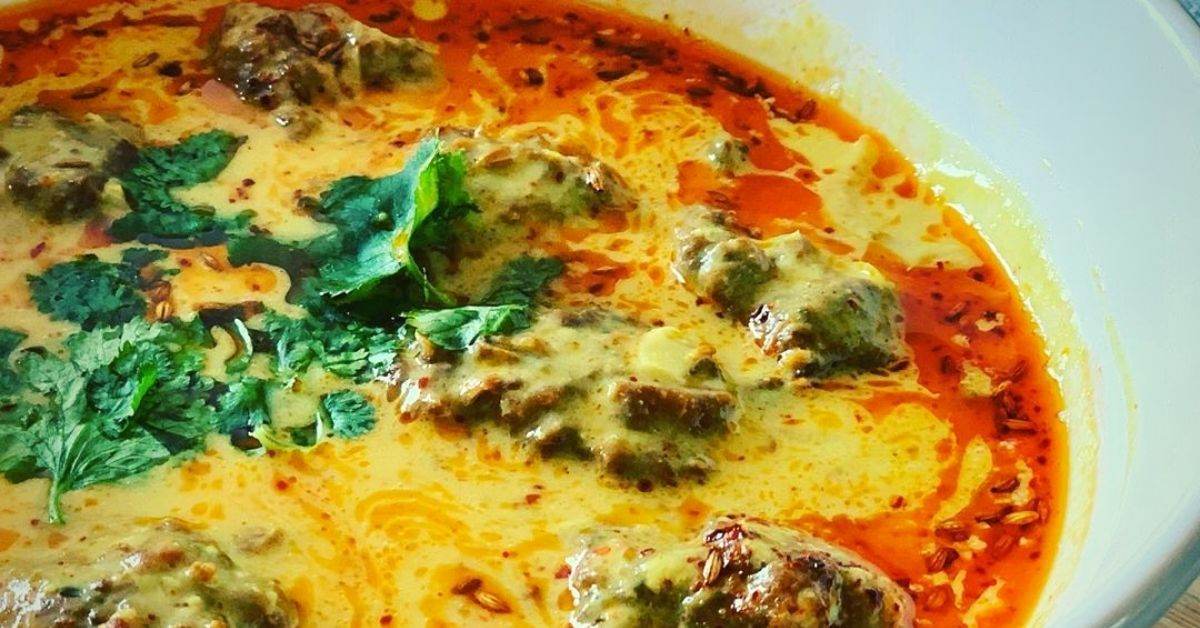Who’s Winning These 5 Major Food Fights Forever Raging in India?
Be it roshogolla or sambar, tell us about that one food origin fight you just cannot stay out of.

It’s no secret that Indians are passionate about their food and this is the culmination of each region lending its unique taste, flavours and cuisine that bind the geographical extents of India.
In a vast and diverse nation such as ours, food tends to evolve. It crosses borders, cuts across the varied palates and absorbs the local ingredients. This evolution leads to debates and discussions about the origin of a particular dish or the superiority in taste.
We do not shy away from a good food fight, both on and off the plate if it comes to the food each region takes pride in.
So in honour of our everlasting ardour for soul-satisfying delicacies here are some epic food battles to remember:
1. Roshogolla

In popular culture, roshogolla, made with Indian cottage cheese or chhaana or chenna (in Odia) is often considered a quintessential Bengali delicacy. However, a few years back, this was disputed by West Bengal’s neighbour, Odisha.
They claimed that the sweet-ball of sugary delight originated from the famous Jagannath Temple in Puri as part of the religious rituals in the 12th century. The claim was that the Odisha Rasagola was brown in colour, soft and not very sweet. In the honour of the universally-loved delicacy, the Odisha government established 30 July as the Rasagola Dibasha in 2015 to mark the festival of Niladri Bije, the last day of the Rath Yatra.
West Bengal was quick to retort, staking a claim to their state’s beloved dessert. In Bengal, one can find all types of roshogollas but the traditional ones are the light-cream coloured, spongy ball-shaped sweets soaked in sugar syrup called chashni.
In West Bengal, the origin of roshogolla is credited to confectioner Nobin Chandra Das in the 1860s.
The epic Rasgulla battle began over the Geographical Indication (GI) tag.
A GI tag is an intellectual property identifier that recognises the origin of a product. The tag is to prevent any unauthorised use of the geographical indication aiming to boost exports by giving any product its unique identity.
Finally, two separate GI tags had to be bestowed on the ball full of sugar syrup. The Bengalis have their Banglar Roshogolla and the Odias have their Odisha Rasagola.
The battle may be over but the war on which Roshogolla/Rasagola is better, rages on.
2. Sambar

Sambar is a hearty lentil and tamarind-based broth with one or more vegetables. It is not just an ordinary side dish, but a subject of debate across southern India and beyond. Over taste, texture and even methods of preparation, states like Karnataka, Tamil Nadu and Andhra Pradesh continue to fight.
While the sambar prepared in Karnataka and Andhra Pradesh is slightly sweet, the Tamil Nadu version has more savoury flavour and spice.
But beyond the table-top debates about whose version is the best or most authentic, the origin of sambar was more or less associated with south India, until food scholars presented an alternate theory. The fight then turned murkier as many began to claim that the quintessential Dravidian delicacy might have roots of origin in Maharashtra.
According to one version of the story, the second Maratha ruler of Thanjavur, Shahuji Bhonsle (1684-1712) had organised a welcome ceremony in his palace, for his cousin Sambhaji, son of Shivaji. During the preparations for the feast, royal cooks were in a fix due to the lack of essential supplies like kokum and moong dal for a traditional Marathi dal, amti.
“Since there was no kokum, they used tamarind, the local souring agent. The dish, made almost by accident, was appreciated and named ‘sambar’ in honour of Sambhaji,” Nandini Vitthal, a native of Thanjavur Maratha Deshastha community tells DNA.
But owing to the poorly documented history of Indian food and its dynamic quality to diversify beyond borders, there also exist a number of counter-theories for the origin of sambar with references going back to 1648 accounts by Govinda Vaidya, a poet in the court of Wodeyar king Kanteerva Narasa Rajendra Vijaye. Huli, a sour dish resembling sambar made with toor dal, tamarind and vegetables was popular in the kingdom.
Now reigning across India as a comfort food, sambar’s impressive versatility makes it even harder to reach a conclusive account of origin, keeping its past speckled and spectacular as ever.
3. Idli

Another South Indian dish that sets off the origin debate is the humble rice cake, idli. Largely known all across the world as a south Indian delicacy, Idli has its origins abroad, according to a few food historians.
With a dearth of relevant literature to point to its origin, food historians like KT Achaya and Shri Bala believe that idli might have just come to India via trade links between Indonesia and South India. While Achaya points out its similarity to an Indonesian dish kedli, Shri Bala provides a more constructive theory on why idli could not have been invented in south India, to be more exact, Tamil Nadu, at all.
She claims that the tradition of fermenting batter was not popular in ancient South India, and it is this method of preparation of idli that makes it hard to be a truly Indian delicacy.
Fermentation as a culinary technique has been well-documented in Indonesian food history and was probably passed down to Indian cooks during trade transactions. Her theory is that India might have brought in the technique and experimented with a number of dishes, idli being the result.
Beyond this however, the origins of this fluffy round cloud of culinary comfort is quite blurry.
4. Pao

A staple in Western India, pao or pav is a common man’s bread. Extremely versatile, it is the base for several iconic Marathi dishes like, vada-pav, pav bhaji, misal pav, and keema pav among others. But the state’s neighbour Goa also boasts a range of dishes like vindaloo, sorpotel, etc. as the perfect companion for pao, commonly known as poi in the region.
But unlike rasgulla or sambhar, the battle over pao is not quite as fiery. Both regions accept their similarities with pao in a rather civilised manner. Pao forms the crux of both Goan and Marathi cuisine and there’s no table-thumping dispute over it.
The reason could be the foreign roots of the staple and was in fact, a gift from the Portuguese. In her book, Curry: A Biography, Elizabeth M. Collingham talks about how the Portuguese landed in a place where the locals largely ate rice. They introduced a small round and crusty bread called pao to be used especially during Holy Communion.
Although flour was available in Goa, yeast was difficult to find. Therefore, the bakers used drops of the local liquor toddy, to ferment the dough and create various shapes. From there the bread then traveled to Mumbai where it was soon picked up as common street food that can be eaten on the go.
Over the years, pao, pav or poi has emerged as an iconic companion of both vegetarian and non-vegetarian curries all across India.
5. Kadhi pakora

A gram flour dumpling in yoghurt gravy is a simple way of defining India’s most intriguing comfort food, kadhi pakora. It is so popular that every part of India claims to have its own version of it. But the Punjabi and Rajasthani kadhi has somehow gained more mainstream popularity over the years.
According to many food bloggers, kadhi’s origin seems to be in Rajasthan owing to its mode of preparation. The state is a prominently arid region and the use of yoghurt or other dairy products is quite common in Rajasthani cuisine. So the substitution of water and veggies with yoghurt and gram flour for the pakoras (lentils, gram flour and beans is commonly grown in the region), led to the origin of kadhi, and soon this besan kadhi travelled to its neighbouring states like Gujarat, Punjab and Haryana, according to some.
Achaya, however, disputes this claim. According to him, kadhi has its origin in South India as the word ‘kari’ in Tamil, records of which can be found in 1500 B.C.
“Some also believe that the yoghurt-based Kadhi is from Northwestern India and is a precursor to what came to be known as the British curry. The British were exposed to this saucy dish much earlier than to the foods of the south; they had entered India in the early 1600s through the northwestern city of Surat, making kadhi quite possibly the original curry,” he says.
Be it the Marwaris, Gujaratis, Sindhis and Punjabis or whole of south India, everyone seems to lay claim for the fame of this turmeric-imbued delish curry. Some add a bit of mustard tadka, while others add curry leaves, but nothing can dispute the fact that this dish, in all its varieties, is a wholesome meal that tends to simmer with love and nostalgia.
Amid these fuzzy food origin stories, what emerges is an extraordinary saga of gastronomic brilliance that India boasts of. These delicacies, despite having been clearly undocumented over centuries, have survived, even though their origins may be lost to us.
Featured image source
(Edited by Saiqua Sultan)
If you found our stories insightful, informative, or even just enjoyable, we invite you to consider making a voluntary payment to support the work we do at The Better India. Your contribution helps us continue producing quality content that educates, inspires, and drives positive change.
Choose one of the payment options below for your contribution-
By paying for the stories you value, you directly contribute to sustaining our efforts focused on making a difference in the world. Together, let’s ensure that impactful stories continue to be told and shared, enriching lives and communities alike.
Thank you for your support. Here are some frequently asked questions you might find helpful to know why you are contributing?


This story made me
-
97
-
121
-
89
-
167













